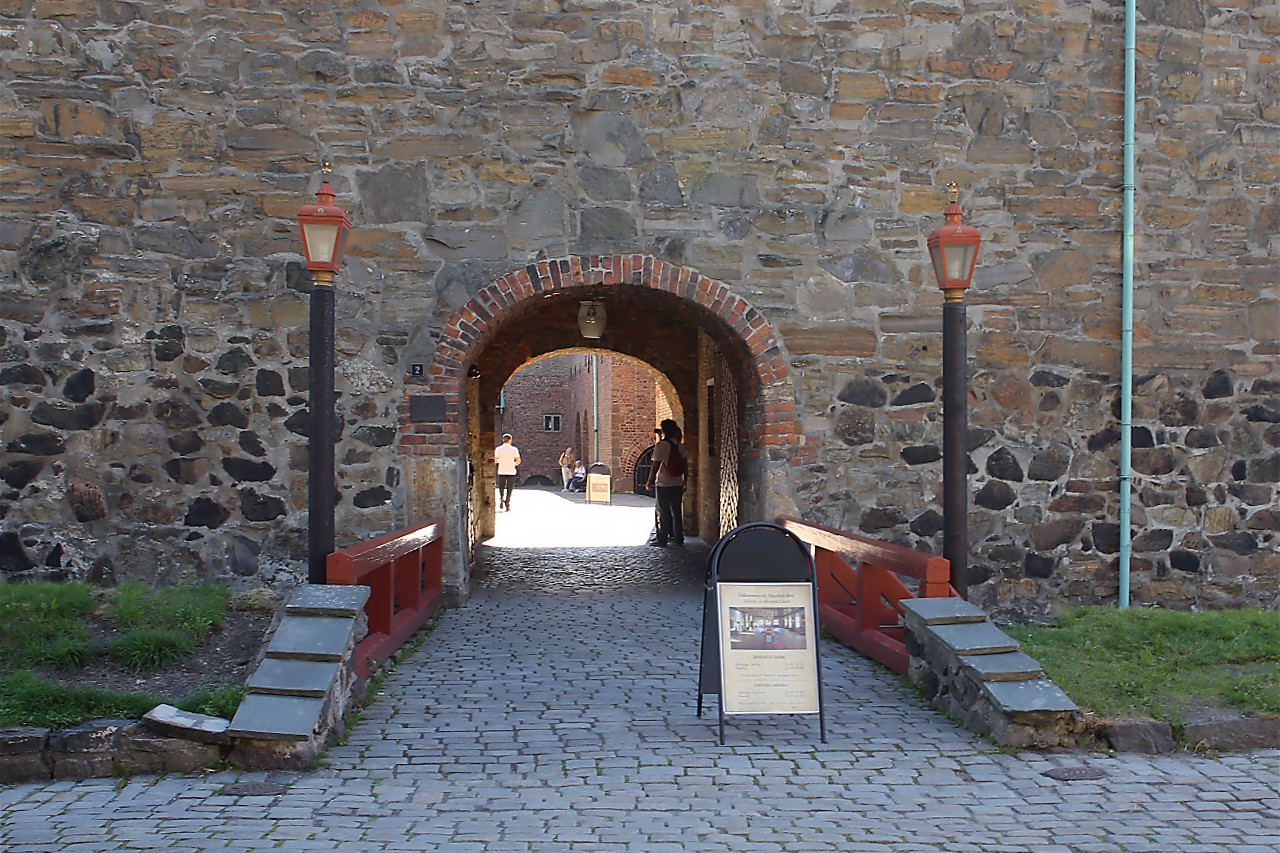Romeriks Bastion and Knutstårnet Gate, Akershus Fortress
Now you can get inside the citadel by climbing the path that runs along the western side of the castle. The entrance to the fortress is protected by a small fortification with loopholes, built in 1770.
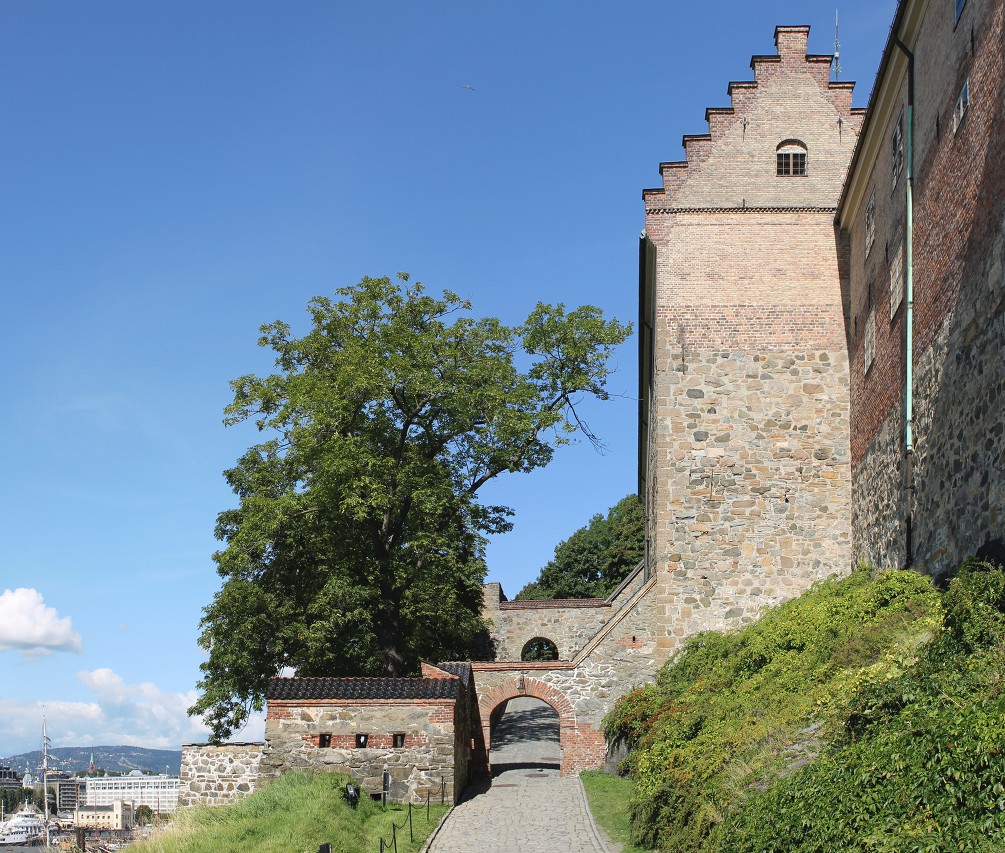
Behind the first arch is the Romeriks Bastion, built during the Kalmar War of 1611-1613 to protect the entrance to Pipervika Harbour. In fact, this is not a fortification, but a wood warehouse of Akershus Castle, on the territory of which several cannons were installed. Therefore, it was nicknamed Romeriks bastion med vedhage, which translates as "Bastion Romeriks with a wood shed". In 1640-1641, the gun platform was paved with granite slabs.
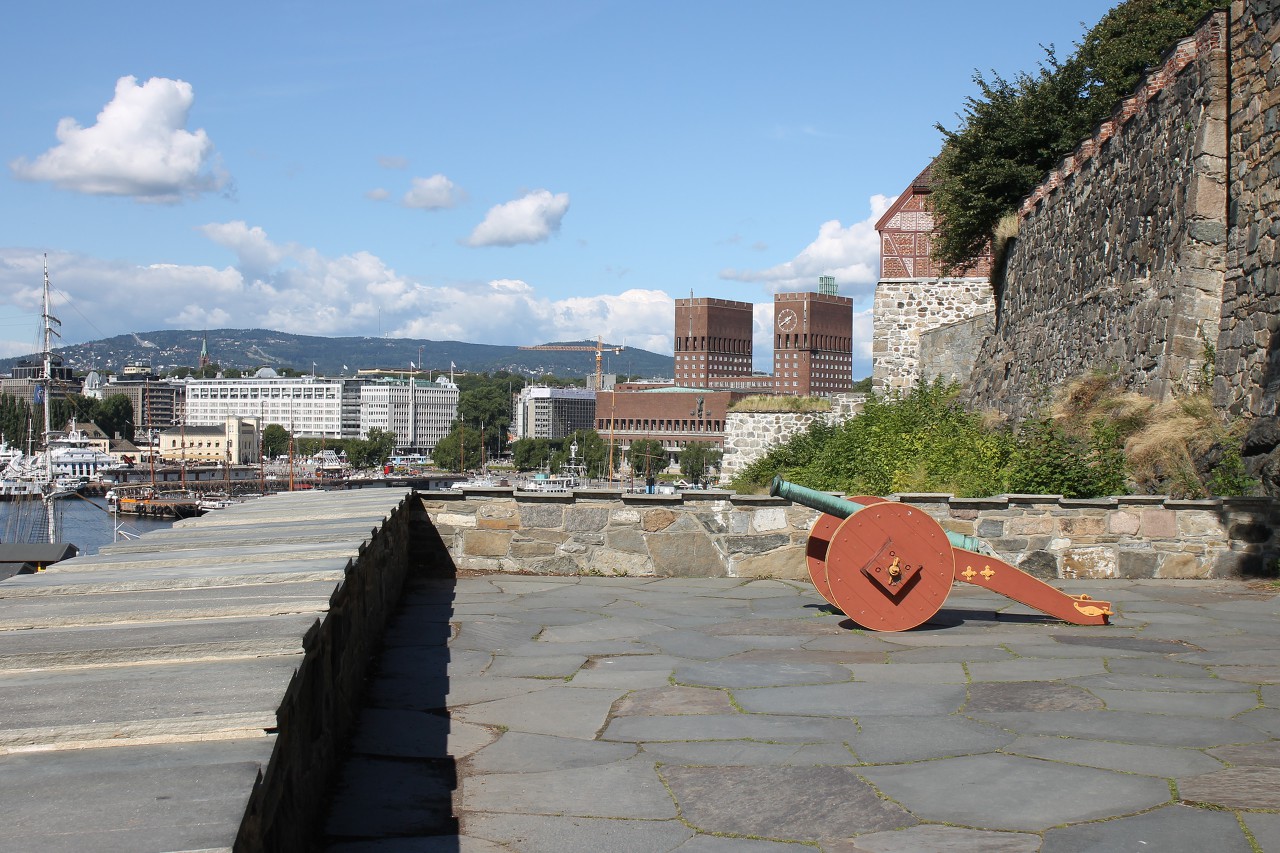
Now on the bastion site there are two authentic bronze cannons with the royal monogram.
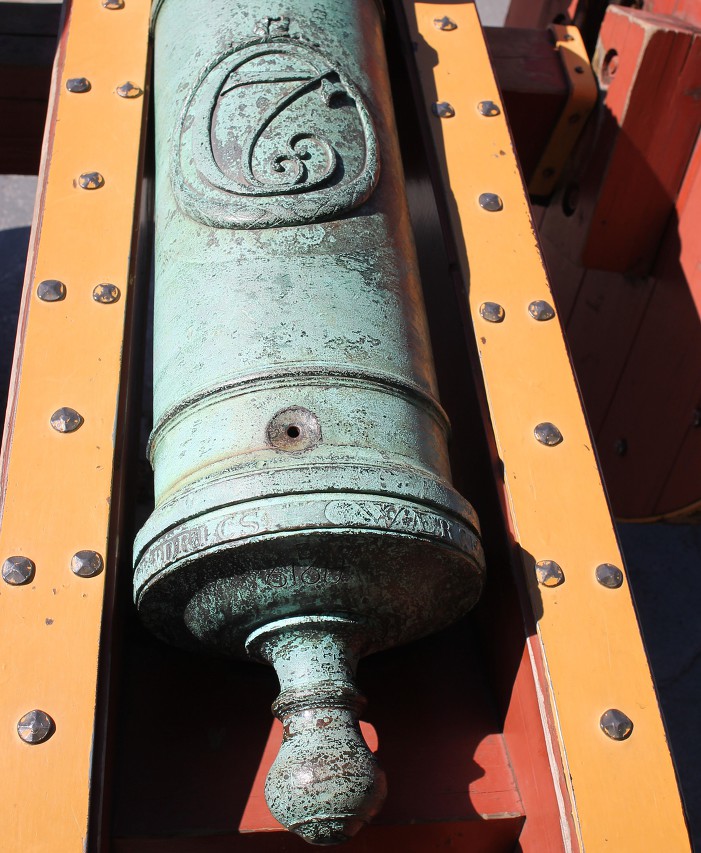
As you can see, the entire water area of the harbor was perfectly shot through from the wood-burning area. And now you can admire the piers with sailing ships and ferries.
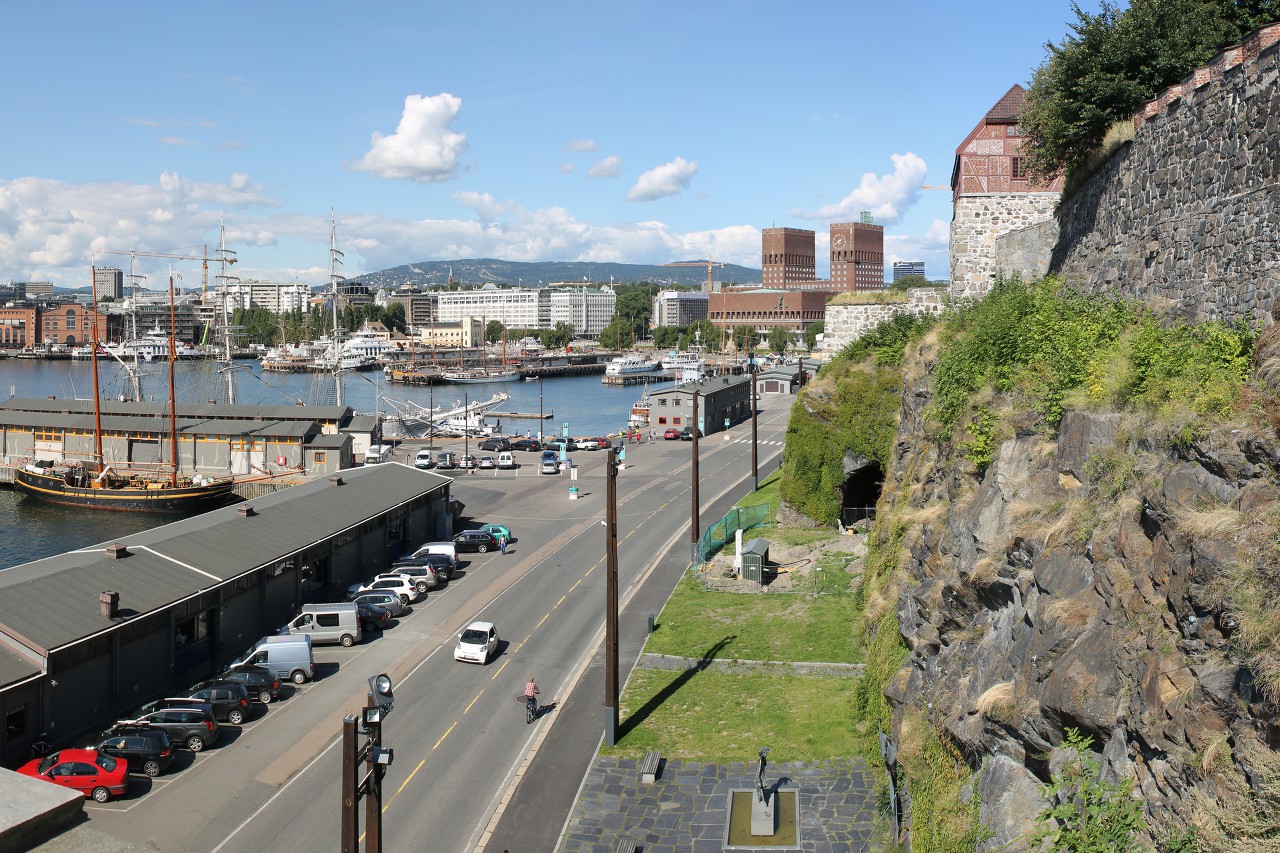
Along the bastion the road goes up and along its center the cobblestones are laid with a ledge, so that the horse's hooves do not slip in the ice. And the outer wall separating the road from the Romeriks bastion is lined with black glazed tiles.

The next gate is called Knutstårnet and leads to the inner ring of fortifications. Around 1300, a flanking tower called Kannik was built here. At one time, the tower was used as a prison, then there was a powder magazine. The tower was named "Knut" in honor of the knight Knut Alisson. After the defeat of the rebellion of the Norwegian nobles in 1502, he was imprisoned in the tower and spent 12 years in it. Now only a part of the walls of the tower remains.
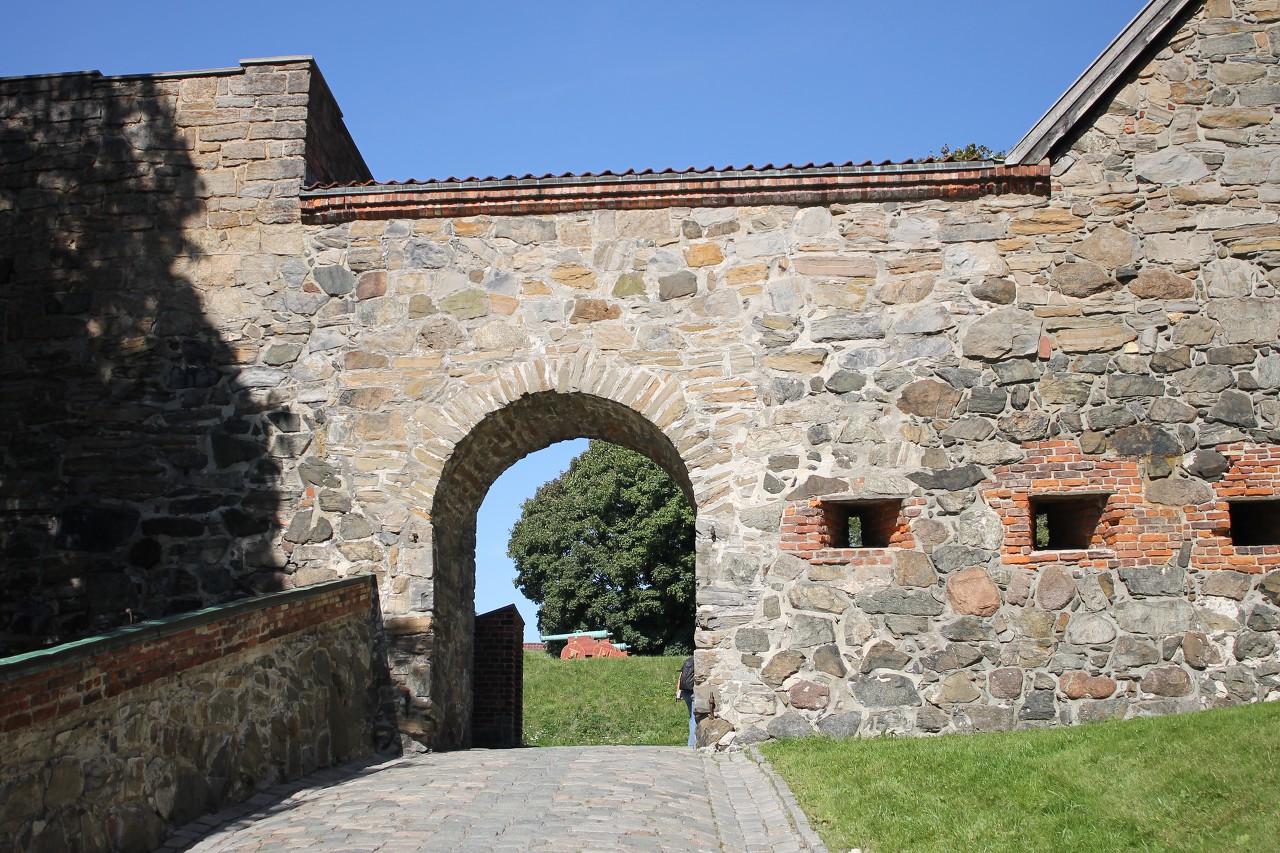
Behind the gate is a Baroque building Corps de Garde built in 1754 to the castle guards.
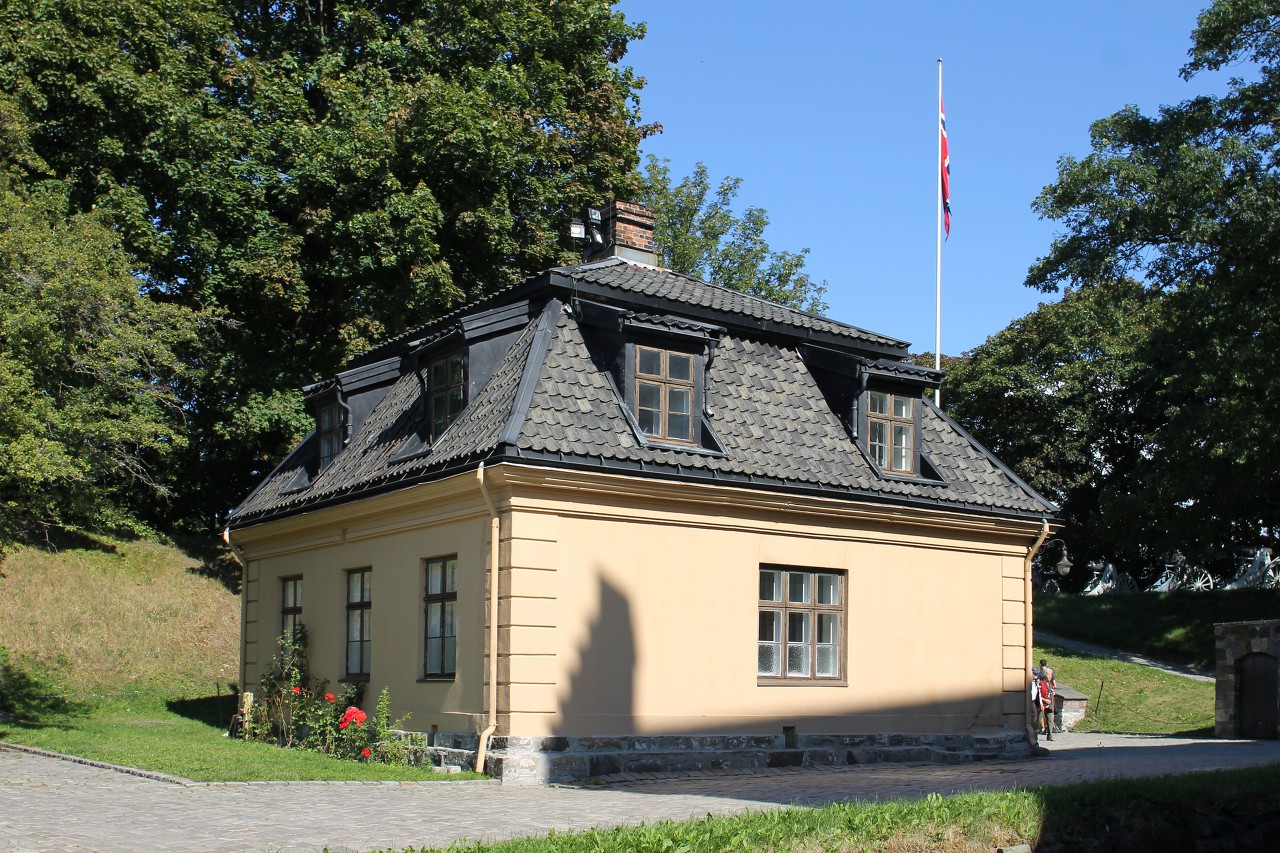
There is a viewing platform in front of the guardhouse, where you can enjoy the entire panorama of Pipervika Bay.
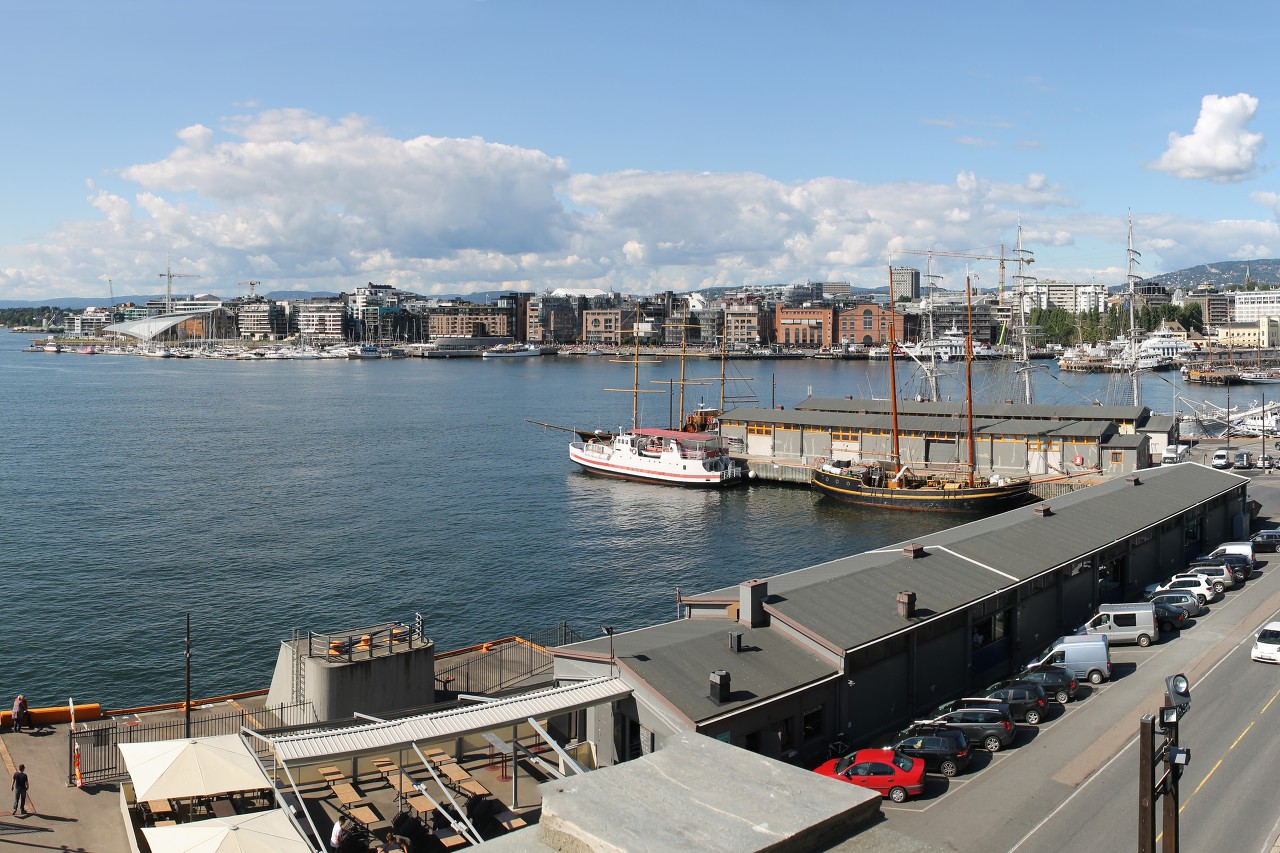
On the other side, you can see the east wing of Akershus Castle.
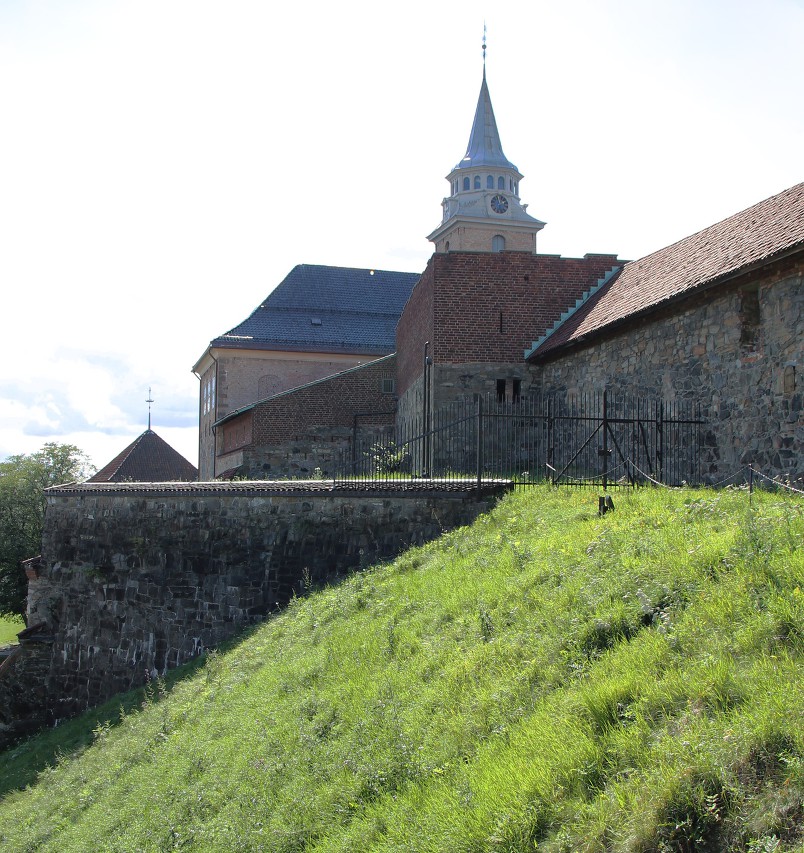
We head for the gate that leads to the courtyard of the castle.
